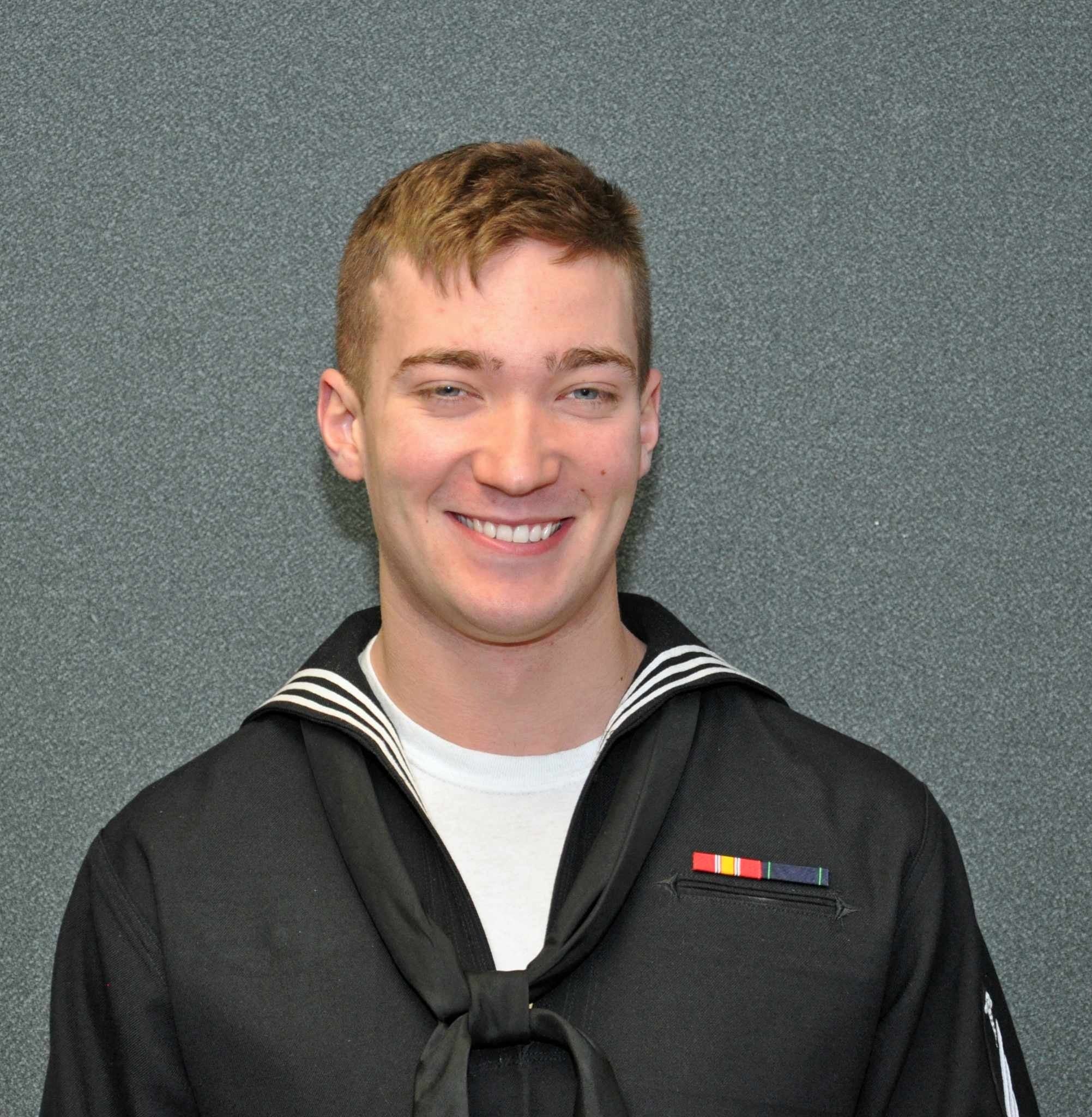- Home
- Our Newspaper
- News
- ‘They’re judge and they’re jury’ — How the military’s malpractice claims process is failing troops and families
‘They’re judge and they’re jury’ — How the military’s malpractice claims process is failing troops and families
A military surgeon performs an emergency appendectomy as other medical team members assist. (Mass Communication Specialist 1st Class Andrew Brame/U.S. Navy).
Special Forces Master Sgt. Richard Stayskal began having problems breathing in March 2017, and within months he was coughing up blood. Military doctors were unable to determine what was wrong but suspected that Stayskal was suffering from pneumonia or allergies. It was not until he saw a civilian pulmonary specialist that Stayskal learned he had lung cancer.
Stayskal became an advocate for service members to be able to hold the military accountable for medical malpractice. In December 2019, the National Defense Authorization Act enacted a law named after Stayskal that finally gave troops and their families the right to file medical malpractice claims against the military.
But nearly three years later, Stayskal, whose lung cancer is now at Stage IV, is still waiting for his medical malpractice claim to be resolved and he has been given no indication of how long the process will take.
Stayskal’s attorney filed his medical malpractice claim on Jan. 1, 2020. Since then, he said he has heard a variety of excuses about why his claim is still being considered, but the process has been so opaque that he is not sure what the real holdup is.
“It just feels like they can take an infinite amount of time, and let’s say 99 doctors agree that I was wronged, it was egregious, it was malpractice, it’s all clear, cut and dry; but they’re going to keep on going to no end to find the one that says: ‘Ah, no, no I totally disagree; that was never malpractice.’”

Stayskal is hardly alone. Military.com reporter Patricia Kime recently revealed that of the 448 medical malpractice claims that have been filed with the departments of the Army, Navy, and Air Force, only 11 have been settled — about 2.5%.
“The military has deliberately avoided approving legitimate claims to save costs because Congress has not appropriated sufficient resources to compensate aggrieved parties,” said Sean Timmons, a managing partner of the Tully Rinckey law firm’s office in Houston. “Additionally, the very people accused of misconduct are the ones themselves reviewing the allegations of malpractice and gross negligence.”
Military.com further broke down the number of medical malpractice claims by service:
- The Army received 184 claims, of which six have been approved, 36 were denied, 73 are being appealed after an initial denial, and another 69 are still under investigation.
- The Department of the Navy has received a total of 146 claims from sailors, Marines, and military families, of which 58 have been denied and one was settled for $250,000.
- The Department of the Air Force has received a total of 118 claims, of which four have been settled, 23 were denied without the chance of appeal, and another six were appealed to the Defense Health Agency — five of which were denied, and the remaining case is still under consideration.
While the success rate for medical malpractice lawsuits in civilian courts is low, it is still higher than the number of cases settled by the military branches, said Katherine Kuzminski, director of the military, veterans, and society program at the Center for a New American Security think tank in Washington, D.C.
Kuzminski cited a 2009 academic journal article that looked at medical malpractice lawsuits, which found that physicians won between 80% and 90% of jury trials in which the evidence of negligence was weak as well as 70% of “borderline cases” and 50% of cases with strong evidence of negligence.
“Between 80% and 90% of the claims rated as defensible are dropped or dismissed without payment, according to the article in Clinical Orthopedics and Related Research, which is published by the Association of Bone and Joint Surgeons.

For military malpractice claims, it is clear that the military branches need to increase the size of their legal staff to make sure cases are processed more efficiently, Kuzminski told Task & Purpose.
“However, that does not mean that the number of approved cases or damages paid will increase — only that the cases will be handled more expediently,” Kuzminski said.
It has only been in recent years that troops have been able to file malpractice claims against the military. For more than 70 years, the Feres Doctrine — named for the Supreme Court’s 1950 Feres v. United States decision — prevented service members from suing the Defense Department over any injuries or deaths that occurred as a result of their service. The ruling has since been used to bar lawsuits due to negligence that takes place far from the battlefield, from medical malpractice at stateside military hospitals, to training accidents, to sexual assault.
But in December 2019, then-President Donald Trump signed that fiscal year’s National Defense Authorization Act, which included the provision named for Stayskal that allowed troops to file malpractice claims in certain situations. However, it was another year and a half before the Pentagon published the rules by which service members and their families could file such claims, so the process is relatively new.
The fact that the military has settled so few malpractice claims since then shows that troops and their families should have been granted the right to take their cases to court instead of having to go through an internal review process, said Dwight Stirling, the CEO of the Center for Law and Military Policy think tank.
That’s why Stirling testified before Congress in April 2019 that the military should not be given the power to adjudicate its own mistakes, he said.
“It’s a simple case of having the fox guard the hen house,” Stirling, a military lawyer with California National Guard, told Task & Purpose. “These cases should be decided by a court of law in full view of the public, where the military has to show its documents and the doctors have to submit to depositions and an independent court and judge get to render a verdict.”
Natalie Khawam, an attorney who represents 165 troops who have filed medical malpractice claims against the military, said that some of her clients have died while waiting for their cases to be decided. One of those service members was Army Maj. Richard Star, a fierce advocate for allowing all veterans to receive both their retirement pay and Department of Veterans Affairs disability benefits concurrently.
Khawam said the process of filing malpractice claims is fundamentally flawed, giving the military branches an advantage over claimants. All the military needs to do to deny a claim is to find a medical expert who believes no malpractice took place, she said.
When medical malpractice claims are denied, neither the service members who filed the claims nor their attorneys are provided with any information about which experts the military services consulted or how those experts arrived at their conclusions, Khawam told Task & Purpose.
“We don’t know anything about this expert, whether he’s even board certified — nothing, not even a name,” Khawam said. “We can’t even see the expert’s decision.”

Pentagon spokeswoman Lisa Lawrence referred questions about the medical malpractice claims process to the individual military branches, which are responsible for processing service members’ claims.
When asked if the Department of the Navy provides an explanation to sailors and Marines about why their medical malpractice claims are denied, Navy spokeswoman Lt. Alyson Hands referred Task & Purpose to Part 45 of the Code of Federal Regulations, which explains the rules and procedures by which troops can file such claims.
“Each claim is unique and evaluated based on its particular set of facts,” Hands said. “As always, when processing medical malpractice claims, the Navy adheres to the statutory provisions of the Fiscal Year 2020 National Defense Authorization Act, as well as the rules promulgated by the Office of the Secretary of Defense to implement those provisions. We will not comment further on the adjudication process.”
Ann Stefanek, a spokeswoman for the Department of the Air Force, said that airmen and Space Force guardians are provided with an explanation about how a decision was reached on their medical malpractice claims.
“When we issue an initial determination denying a claim, or make an offer in settlement, we provide a meaningful explanation as to the basis of denial or settlement offer per federal regulations,” Stefanek told Task & Purpose. “In this explanation, we identify the specialties consulted.”
The Department of the Air Force also cannot speculate on what the results of the claims process might indicate, said Stefanek, who added that the department will continue to try to resolve outstanding claims as quickly as possible.
Army spokesman Matt Leonard said that the service works with claimants so that they understand if they need to provide any additional information before the service reaches a decision on their cases.
“Although the Army does not disclose the name of the consulted expert, the Army provides detailed letters outlining its position before taking any action on a claim,” Leonard said. “Additionally, the Army encourages claimants to provide additional evidence or expert opinions before taking action on any claim. Furthermore, the Army uses experts outside the Army to determine whether the standard of care had been met. The Army’s focus is on the merits of the claim. A claimant is also entitled to appeal decisions made by the Army to the Appeals Board.”
The Army is required by law to investigate malpractice claims and “pay only those claims that are meritorious, Leonard said.
“The Army’s investigation of the 184 claims it received revealed well over half of them failed to meet the requirements of the law,” Leonard told Task & Purpose. “These claims were either untimely (some alleging malpractice over a decade before the law was enacted), were not in a covered medical facility as required, were filed by family members or others who are ineligible to file, and some failed to allege malpractice at all. All other claims are being investigated to determine whether they [are] payable under the law and Code of Federal Regulations.”

Exactly who is eligible to file claims can be confusing. The Defense Department’s rules for medical malpractice claims allow “an authorized representative on behalf of a member who is deceased or otherwise unable to file the claim due to incapacitation.” However, the claims process does not allow “derivative claims or other claims from third parties” who argue they have been injured as a result of harm to a service member.
“This prohibition includes claims by family members or survivors arising out of the circumstances of personal injury or death of a member,” according to the rules, which were posted on the Federal Register in June 2021.
In layman’s terms, that means that family members can file claims on behalf of a service member who has died, but they cannot file their own claims based on the death or injury of a service member, said Butch Bracknell, a retired Marine lieutenant colonel and military attorney,
“They can bring a claim on behalf of a service member if the service member is incapacitated (coma, brain damage, etc) or deceased (representing the service member’s estate),” Bracknell told Task & Purpose. “These claims are on behalf of the service member him or herself, not a claim in their own right (loss of companionship, emotional distress, etc).”
But family members cannot make a claim if medical malpractice was discovered after the death of a service member, said Rep. Markwayne Mullin (R-Okla.), who co-sponsored the law that allowed troops and families to file medical malpractice claims with the military.
Mullin told Task & Purpose that he believes Congress needs to take more action to ensure the claims process is fair for troops.
Many service members whose cases should already have been settled will never have the peace of mind knowing that their families will be taken care of after they die, Mullin said.
“That’s wrong in every way possible,” said Mullin, who is running for the Senate. “That was never the intent of the bill and if we have take additional action, we will.”
However, Mullin stopped short of saying that the Defense Department and individual military branches have acted in bad faith since the law was passed in December 2019. It’s possible that the military’s bureaucracy is so risk averse that it would prefer to continually process malpractice claims rather than making decisions on cases, he said.
“I’ll give them the benefit of the doubt right now, saying that maybe they’re trying to understand the intent of it,” Mullin said. “If that’s the case, then they need to let us know because if they need more clarification then let us clarify it for you. Right now, what it seems like is happening is we’re pushing harder than they’re trying to figure it out. That shouldn’t happen. They should be trying to at least push uphill as hard as we’re trying to push uphill, not us trying to encourage them by lighting a fire under their backsides.”
The low number of medical malpractice claims approved by the military services could indicate that the Feres Doctrine still casts a long shadow, said former Marine Maj. Kyleanne Hunter, a senior political scientist at the RAND Corporation.
“This is speculation; but using the way other changes have been rolled out as a baseline for some of this, there’s concern about creating a precedent that service members should just be able to sue the government for anything,” Hunter told Task & Purpose. “Culturally, there’s some fear about what this actually means and there could be, as a result, a higher than anticipated or higher than planned standard that’s being applied here — I don’t know that for sure, but I think that’s one of the reasonable takeaways that we can say.”
Because the claims process itself is so opaque, it’s also possible that attorneys may not yet know how to present these malpractice cases to the military in an effective way, Hunter said.
Hunter was part of an independent review commission that looked at how the Defense Department dealt with sexual assault and sexual harassment cases. One of the commission’s findings was that military officials were making mistakes in prosecuting such cases because they didn’t fully understand the process.
For example, the rules about transferring evidence from civilian to military police officers were not always clear, and commanders would create the appearance of unlawful command influence by talking to survivors — and some accused service members — before military attorneys became involved with the cases, she said.
“I think there could be something here going on too, either with opaqueness or just an unfamiliarity with how to do these cases that could also be leading to cases being thrown out because of legal reasons, not necessarily on the fact that it’s right or wrong,” Hunter said.

For the family of Navy Corpsman Jordan Way, the military’s malpractice claims process has been more than indifferent: It has been cruel.
Jordan Way was stationed at the naval hospital at Marine Corps Air Ground Combat Center Twentynine Palms, California, when he underwent shoulder surgery that left him in pain so severe that he could still feel it while he was sleeping. Military doctors prescribed him oxycodone, a powerful semi-synthetic opiate, which he took as directed. However, the medication wasn’t lessening Way’s pain so military doctors kept increasing his dosage from 5 to 10 and eventually 15 mg tablets. Days after the surgery, he was dead, having taken more than 80 doses of the drug — as instructed by his doctors.
His parents Suzi and Dana spent more than a year trying to find out what happened to their son before finally learning that the cause of his death was severe hypoglycemia brought on by opioid toxicity.
Suzi Way initially believed the medical malpractice claim process had finally opened the door for Congress and the Defense Department to finally take care of service members suffering from military doctors’ mistakes. Then in August, Natalie Khawam, who also represents the Way family, informed them that their claim had been denied.
“I laughed,” Suzi Way told Task & Purpose. “It’s comically offensive. “It was at that moment that I realized: They’re judge and they’re jury, and we can put in an appeal, but it goes right back to the judge and the jury, and they’re king.”
Khawam provided Task & Purpose with a copy of the letter she had received from the Navy denying the malpractice claim.
“After a thorough review of your client’s claim and the applicable statutes and regulations, we have made an Initial Determination with regard to the claim,” the letter says.
The Navy justified its denial by claiming the family had not provided any medical explanation to support their claim, when in fact the malpractice claim included supporting documentation and an expert’s opinion, Khawam said.
The denial is currently under appeal. Dana Way said that he feels the entire claims process is “a farce” and “a dog and pony show with no teeth.”
“It is saddening; it is offensive to all these families and our men and women that go out there and put their life on the line for the abuse that the Department of Defense is giving them,” Dana White said. “To turn around and tell a family, ‘We’re sorry, the standard of care has been met, so we’re denying it’ — what’s the standard? Where is that written? ‘Well, we don’t have to tell you because you’re a piece of our property, and when you are unusable, we throw you out into the scrapyard and the VA will take care of you.’”
Although troops and their families nominally have an avenue to be made whole for cases of medical malpractice, the claims process has proven to be anything but quick and easy. Service members like Master Sgt. Stayskal are still waiting for a resolution, and time is not on their side.
External References:
Latest Articles
Latest Interviews
By Contributor:

Jeff Schogol
Jeff Schogol is the senior Pentagon reporter for Task & Purpose. He has covered the military for 15 years. You can email him at This email address is being protected from spambots. You need JavaScript enabled to view it., direct message @JeffSchogol on Twitter, or reach him on WhatsApp and Signal at 703-909-6488. Contact the author This email address is being protected from spambots. You need JavaScript enabled to view it..










